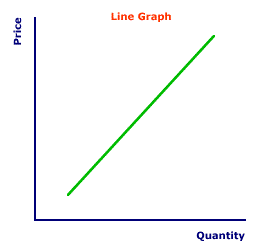
|
|
VERTICAL AXIS: In a graph, this is one of two lines that intersect at a right angle. This is the 'Y-axis' that runs up and down.
Visit the GLOSS*arama
|
|


|

|
                           MARGINAL ANALYSIS: A basic technique used in economics that analyzes small, incremental changes in key variables. Marginal analysis is the primary analytical approached used in the study of markets, production, consumption, business cycles, and economic policies. It not only reflects how most economic decisions are made, it also lends itself to mathematical and graphical analysis. Marginal analysis is based on a simple question often posed in the study of economics: "What happens if something changes by one dollar, one unit, one person, or one whatever?" For example, what happens to the quantity demanded of hot fudge sundaes if the market price',500,400)">market price increases by one cent? Or what happens to gross domestic product if investment decreases by $1? Or what happens to the market price of computers if one more computer supplier enters the industry?Marginal ObsessionThe apparent economic obsession with marginal changes exists for at two notable reasons.- Incremental Decisions: One reason is that many economic decisions made in the real world are made "at the margin." Duncan Thurly decides whether or not to eat one more slice of pizza at the all-you-can-eat pizza lunch buffet after having eaten five slices. Winston Smythe Kennsington III decides whether or not to hire an additional worker to the current staff. The Shady Valley City Council debates over adding an extra penny to their existing sales tax. These are marginal decisions, one and all, and just the sort of phenomena investigated with marginal analysis.
- Sophisticated Analysis: A second reason for using marginal analysis can best be termed analytical sophistication. Economists frequently make use of high-powered mathematical techniques, especially calculus, to create models of markets, consumer behavior, production decisions, or the aggregate economy. Such high-powered mathematical techniques not only lend themselves easily to analyzing incremental changes, but also to building extremely complex models that use these incremental changes to reveal interactions, implications, and conclusions about the economy that are often far from obvious. For example, such a complex model might reveal how a financial crises in Asia affects the construction of new homes in California.
Marginal Slope| Slope and Marginal |  |
The use of marginal analysis works nicely with both mathematical and graphical analysis. Marginal means incremental change. In simple mathematical terms the slope parameter of an equation captures the marginal change. In a graph, the slope of a line captures a marginal change. In effect, the term "marginal" is synonymous with the term "slope."Consider this simple equation that captures a linear relation between two variables X and Y: Y = a + bX The key point of focus is the slope parameter, b. This equation indicates that each 1 unit change in X results in a change in Y by the value of b. If b is 4, then an increase in X by 1 results in Y increasing by 4. The slope parameter b captures the marginal change in Y resulting from a change in X.Now consider a simple graph of a line such as Y = a + bX. It too captures marginal change as the slope. This exhibit displays a positively-sloped line. The numerical value of the slope of the line is 4. This value captures the marginal change in Y measured on the vertical axis resulting from a change in X measured on the horizontal axis. An increase in X by 1 results in Y increasing by 4.

Recommended Citation:MARGINAL ANALYSIS, AmosWEB Encyclonomic WEB*pedia, http://www.AmosWEB.com, AmosWEB LLC, 2000-2024. [Accessed: May 18, 2024].
Check Out These Related Terms... | | |
Or For A Little Background... | | | | | | | | | |
And For Further Study... | | | | | | | | | | |
Search Again?
Back to the WEB*pedia
|



|

|
GREEN LOGIGUIN
[What's This?]
Today, you are likely to spend a great deal of time flipping through mail order catalogs wanting to buy either super soft, super cuddly, stuffed animals or a large stuffed brown and white teddy bear. Be on the lookout for the happiest person in the room.
Your Complete Scope
This isn't me! What am I?
|

|
|
Before 1933, the U.S. dime was legal as payment only in transactions of $10 or less.
|

|
|
"Perhaps the most valuable result of all education is the ability to make yourself do the thing you have to do, when it ought to be done, whether you like it or not; it is the first lesson that ought to be learned; and however early a man's training begins, it is probably the last lesson that he learns thoroughly. " -- Thomas H. Huxley, Scientist
|

|
KLIC
Kullback-Leibler Information Criterion
|

|
|
Tell us what you think about AmosWEB. Like what you see? Have suggestions for improvements? Let us know. Click the User Feedback link.
User Feedback
|


|


